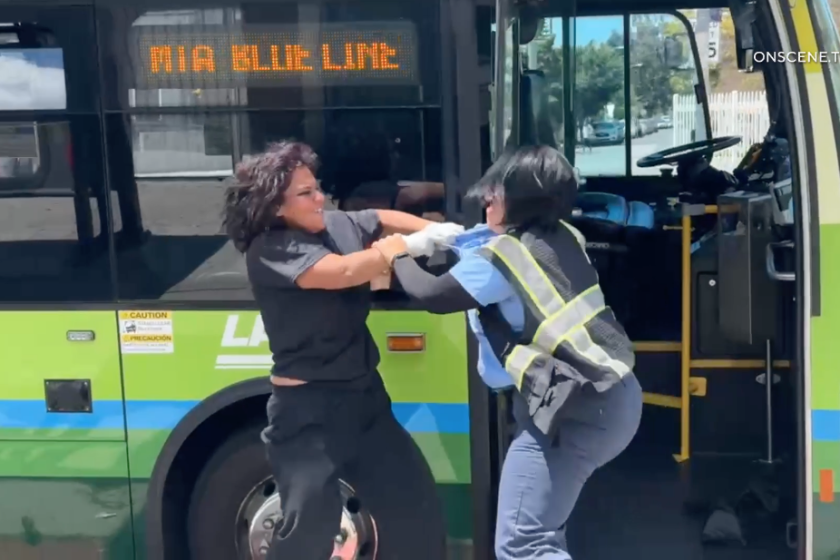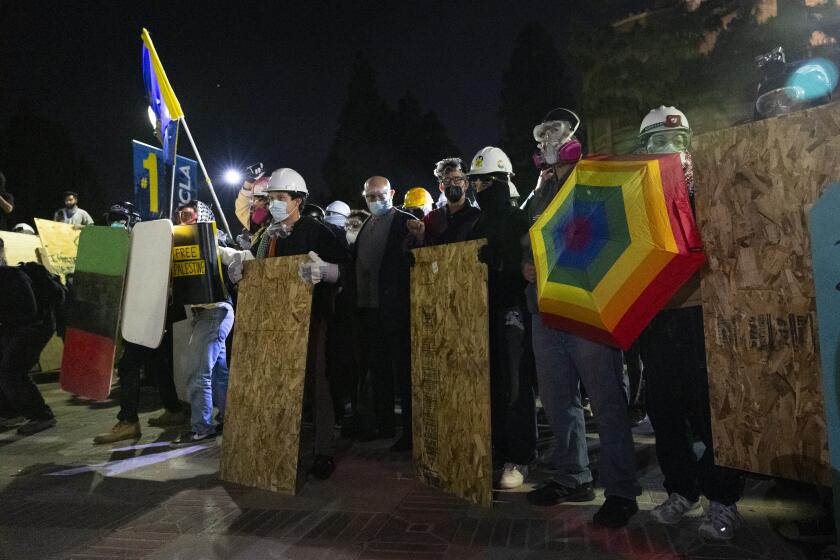Early Adobe to Undergo Restoration
When motorists whiz past Rancho Camulos on California 126 in Ventura County, they are passing a little-noticed gem in the state’s history.
But that’s about to change, preservationists and historians say of the 1,800-acre Mexican rancho that was home to a prominent California land grant family and was the setting of a beloved 19th century novel.
On Friday, state and county officials kicked off a restoration that, when completed next spring, will introduce thousands of motorists each year to the pioneering Del Valle family. The rancho is part of a 48,000-acre land grant given in 1839 to Antonio del Valle, an administrator at San Fernando Mission.
Del Valle’s sons were prominent in California politics for the next century, and their rancho lifestyle was the setting for “Ramona,” Helen Hunt Jackson’s 1884 novel about the harsh lives of Indians in early California.
After a $1.2-million fix-up, one of two adobe homes on the property will open as a rest stop for travelers along California 126. Visitor information on the rancho’s history and on tourism activities in Ventura County will be available.
Several buildings on the rancho were severely damaged in the 1994 Northridge earthquake, said Mary Schwabauer, chairwoman of the Rancho Camulos Museum board. Seeing restoration of the “small adobe” finally get underway is gratifying, she told a small crowd that gathered outside the green-and-white colonial-revival home built in 1920.
“For the first time it will give us visibility on the highway,” she said of the visitor center. “Motorists entering Ventura County from Los Angeles County will stop first at Ranch Camulos.”
A 10-acre portion of the rancho, which is on the highway about 3 1/2 miles west of the county line, has been designated a National Historic Landmark and is open for public tours. But there is not much to see from the highway, said Hillary Weireter, a Del Valle descendant and museum docent.
“When I get people to go back into the gardens and look at the main house, they are thrilled,” she said. “But getting them back there is a challenge.”
In addition to a main family adobe and the small adobe built for the Del Valle sons, the property has a chapel, a bunkhouse, a barn, a fruit stand and a brick winery that is partially crumbled.
Rancho Camulos was midway between the missions in San Fernando and Ventura. The property, and its chapel, became an official stop for Catholic priests and bishops going one way or the other, Weireter said. California 126 itself began as El Camino Real, the mission trail, museum officials said.
The main house was restored two years after the 1994 earthquake.
But it took 12 years to pull together the financing for the small adobe restoration, officials said.
Funding came from federal and private sources secured by the museum’s board.
David Wessel, a San Francisco architect attending a conference on adobe architecture at the rancho Friday, said he was impressed with the property’s intact buildings and its rural backdrop.
“What a wonderful example of early California agriculture,” Wessel said. “And the setting is still like it was. You’re not in an urban setting -- it reminds me of what California once was.”
catherine.saillant@latimes.com
More to Read
Start your day right
Sign up for Essential California for news, features and recommendations from the L.A. Times and beyond in your inbox six days a week.
You may occasionally receive promotional content from the Los Angeles Times.







